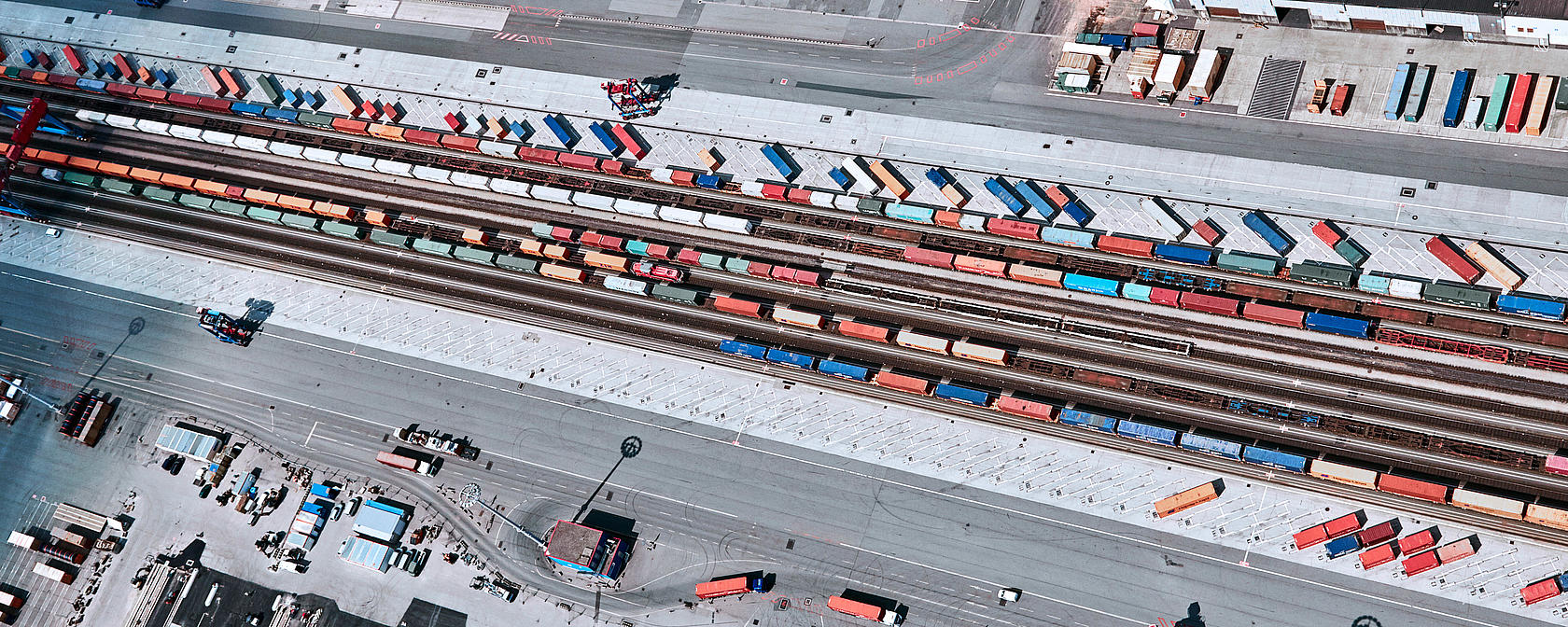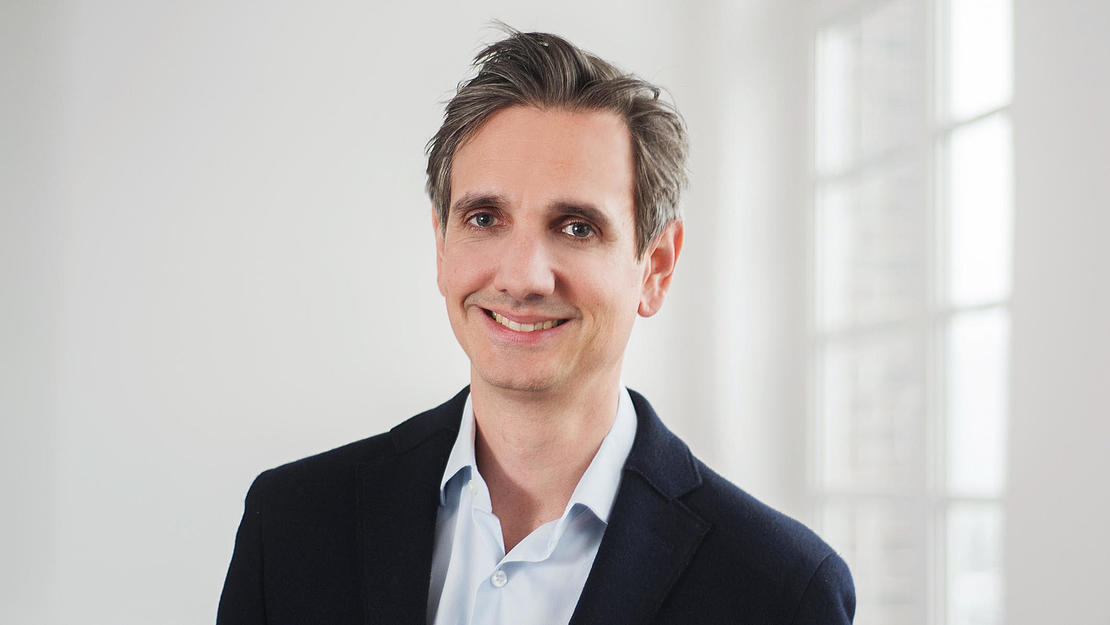
The audio part is only in German available, below you will find the English transcript of the entire interview.
Welcome dear listeners and our guest Hendrik-Emmanuel Eichentopf!
Nice to be here, Christian, thanks very much for inviting me.
You’ve been with the modility start-up since the very beginning and now you’re leading it – what did you all set out to do back then, as things first got going?
As a start-up, you naturally intend to accomplish a lot. First and foremost, though, we wanted to shift more goods onto the railways and thus make a corresponding contribution to clearing congestion on the roads and promoting sustainable transport.

More goods on the railways. Why is this?
Yes, why is this? Many people don’t know this, but, actually, over 80 percent of the goods that we consumers use on a daily basis are transported by road. And only 2.5 percent by intermodal transport! We want to reduce our company’s carbon footprint, so it’s necessary for us to drive what’s called a “model shift”, here meaning the shift from the roadway to the railway. At modility, we want to make a major contribution to this.
Okay, that sounds great. And where do things stand today?
We’ve been on the market for about 100 days now, and we’ve already been able to get a lot of companies excited about modility. So far, we have over 200 users on the platform, who in turn offer over 100 routes, or train connections between terminals. Our users are a healthy mix of transport service providers and transport firms, so both supply and demand.
So, if I’m understanding this correctly, you want to make it possible for anyone who has access to modility to also have easier access to the rails. How does that work, exactly?
Yeah, not just to the rails but to all intermodal transport. The great thing about intermodal transport is that most of the transportation is done on the environmentally friendly railways. Because most rail networks are electrified these days, fossil fuels are no longer needed. This means that only the final distance from the train station to the respective starting or destination address is transported by truck.
And you’ve also thought about a platform solution for this – a digital solution.
Exactly. There’s still no central access point, no digital access, meaning no place where you can find centralised information about the various transportation alternatives. There are no platforms, no access points, where you can find these routes, these offers, and book them directly. And there is no platform through which these transports can ultimately be handled. This is exactly the cause that modility has taken up. A central information portal, were you can simply input your starting and destination address. An intelligent routing algorithm runs in the background, which assesses the different transport options based on intermodal transport criteria and then provides the user with the results.
So, say I’m considering a scenario: How do I best get a container from Hamburg to, let’s say, Ludwigsburg. And you then determine a convenient route that consists of a combination of roads and rails?
Yes, that’s correct. Actually, there are a bunch of different terminals in Hamburg – places where you can transship from road to rail. For example, in the Port of Hamburg there are, of course, a number of different rail connections that can serve as a starting or destination point. And modility would then check against the offerings – meaning the available capacities in our system – to see which is the most convenient option. Convenient in terms of distance, convenient in terms of carbon consumption and convenient in terms of transport time. We would then assess the corresponding results and sort them according to these criteria.
That means that you could also reduce transport costs by using it?
I’d actually like to answer this question a little differently and address something else. Every mode of transport has its merits. It always really comes down to the goods that you’d like to transport. It comes down to the flexibility you require, and above all it comes down to the distance. The farther the distance, the more cost-neutral intermodal transport will be. Other factors could also come into play – for instance, the carbon tax that will make road transport more expensive, just as the tolls will naturally not apply to the railways. You also only need one locomotive driver on the rails rather than 55 truck drivers, as a locomotive or a train can transport up to 55 containers.
There are other digital platforms out there that people are familiar with. They sometimes call themselves digital freight forwarders. What differentiates modility from portals like Sennder or Instafreight?
They are freight forwarders who have developed good digital workflows and are in competition with traditional road-based forwarders. This means that these forwarders take on the transport, responsibility and also carry out the order on behalf of the customer. At modility, we are a digital intermediary. That means we provide a service for our users, our customers and market participants through which they can digitally market their offers as well as have a place where these offers can be found and booked. The actual transport, the actual business relationship, still takes place between market participants. This is thus in line with today’s market structures.
Sustainability at HHLA
It is our aspiration to combine ecological, social and economic interests in order to make our company future-proof. We underline this with our "Balanced Logistics" sustainability strategy.
Read moreThe focus is currently on intermodal transport, meaning the combination of roads and rails. Is it possible that other modes of transport could come into play?
That is actually modility’s intention: to provide a platform for booking and finding intermodal transport. And these modes of transport naturally include inland waterway ships as an essential mode of transport in the market, just like ferries and possibly eventually also short sea shipping. We would then be able to offer a Europe-wide solution.
We’ve already had HHLA Sky as a guest on HHLA Talk. That was also an interesting start-up, and, just like modility, it was born and raised here at HHLA. But I’ve learned that there’s a very clear difference between you and HHLA Sky. Could you tell us about that?
We are a corporate start-up, and we’re very thankful that HHLA gave us the opportunity to develop as independently as we’re doing now. The difference must be that, as an intermediary, we really need to be careful about neutrality, having a neutral market presence and that we need to gain our customers’ trust. To that extent, we made sure from the very start that we brought on well-known market participants in the developmental stages, companies like Kühne & Nagel, DB Schenker and Volkswagen Group Logistics. We wanted to ensure that we were developing a product that would be accepted by the market, but also one that would be needed by the market.
As a port operator, HHLA hasn’t yet developed any of these kinds of portals itself. Why exactly was the initiative started by HHLA? Were you already involved then? Did they come up with the idea, or was it you who had the idea and approached HHLA?
Actually, the idea of creating a central access point and portal for intermodal transport isn’t new at all. It’s been discussed in the market for a while now, but it was never the right time. And HHLA took up the idea and inquired in the market about whether the time has now come when the market participants would agree to operate in such a marketplace, exchange ideas and information, and post offers. The initial results were so positive that HHLA decided then and there to make a portal out of the idea. A team of founders was then brought together who would turn this very idea from paper into reality.
As we’ve heard, you’ve already come quite a long way. Have you already got plans for the future? If I’ve understood correctly, you’d like to expand the portal even more over time.
We’re working very sequentially and repetitively. On the one hand, it’s very important that modility gains market awareness – meaning market participants are aware that this solution exists, that this solution is bookable and usable. On the other hand, it’s very important that we staff and operate our customer support department – our customer interface – well. We must always be responsive in day-to-day support, whether it’s user support or support in booking alternative transport in terms of railways. And, of course, our main business is product development – developing a nice IT solution. You should have fun when you use it. We’ve orientated ourselves towards B2C user concepts that you really see more of in the private sector, like if you're booking a flight or a hotel. We’ve incorporated the design language, i.e. the user experience, that’s familiar from the B2C sector into our own design language, our user experience. This is so that the scheduler, the user, find the same experience in our portal that they are otherwise used to in their private life.
As easy as buying a train ticket online
In collaboration with market participants, modility has created a simple entry point for combined transport. The platform combines the demand for rail solutions with the free capacities that train operators have.
I would like to conclude by touching on another initiative, another project: “Zukunft Schienengüterverkehr” (“Future rail freight transport”). It’s a project through which you’re receiving funding from the Federal Railway Authority. What’s that all about?
As the name suggests, it’s about increasing the attractiveness of the railway and with it shifting more transports to the rails. A wide variety of projects are supported, including purely physical, i.e. asset-heavy projects, such as the introduction of digital coupling so that rail cars can connect to each other automatically. But it also supports other innovative digital topics, like the development and piloting of modility and thus testing modility on the market.
Maybe you could give us a concluding summary – why does the rail freight transport of the future need modility?
Because right now there is no access point like modility, because intermodal transport is still far too non-transparent, cannot be found – thus remains inaccessible to a large part of the forwarders out there – and because more goods can, should and must be shifted from the roads to the rails. This is why we need to make booking intermodal transport as easy as it is to book a truck. And this is why the future of rail freight transport needs modility.


